|
|
|
LAMBORGHINI MIURA P400 SV
1:18 AUTOART
Year/Anno :1971
Color : White - Bianco con cerchi oro
My rating/Mio Voto : 88/100
Value for Money/Rapporto qualità prezzo : 85/100
Original price/Prezzo(2012) : €uro 100
Clicca le F40 sul banner in alto per tornare alla Homepage e visionare altri modelli.
Click on the F40 banner on the top of this page to return at the Homepage and see all the other models of my collection.
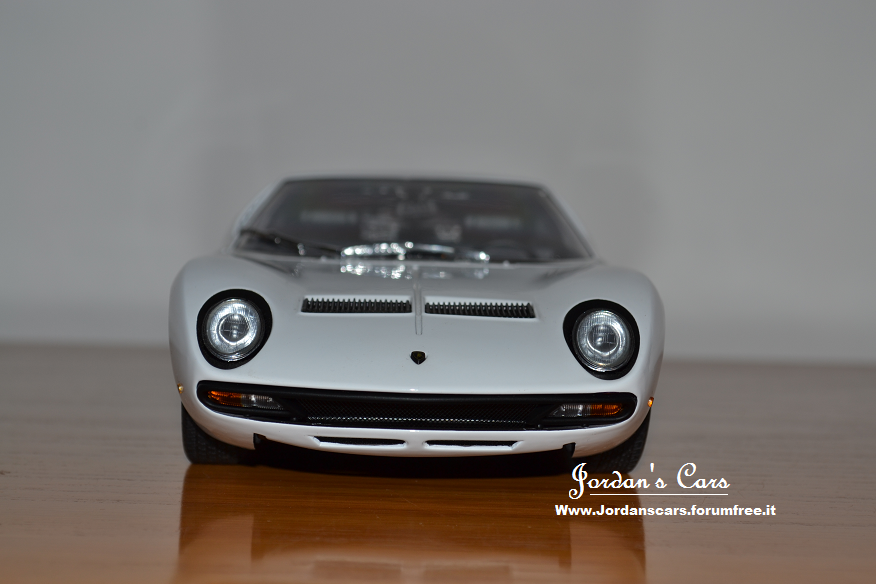
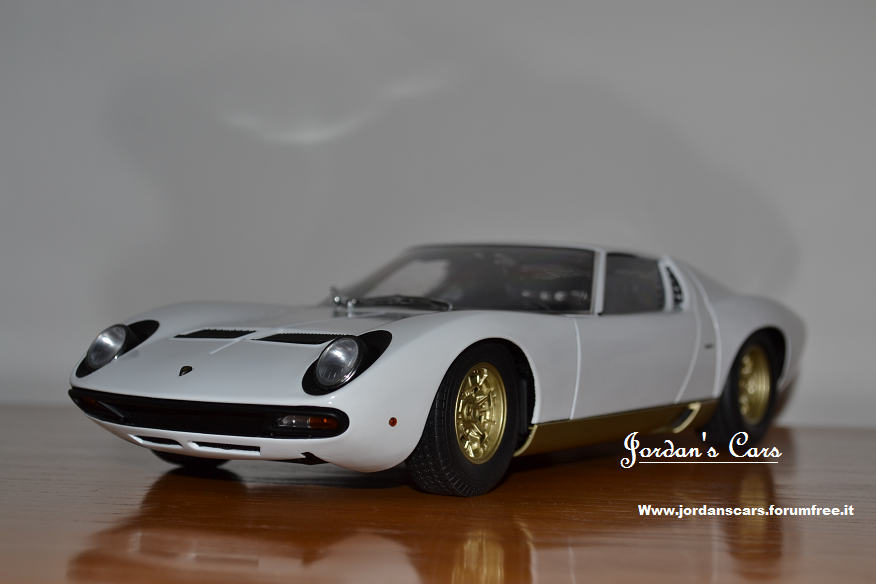
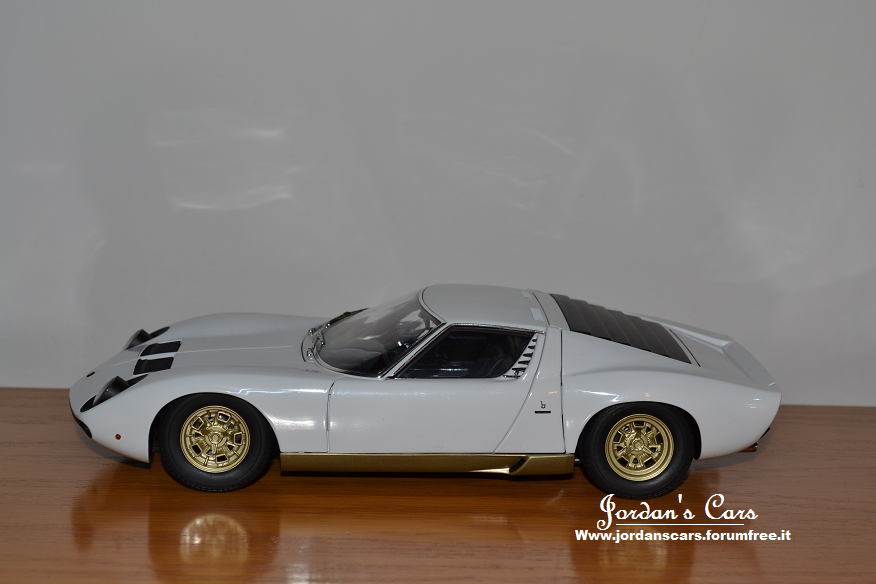
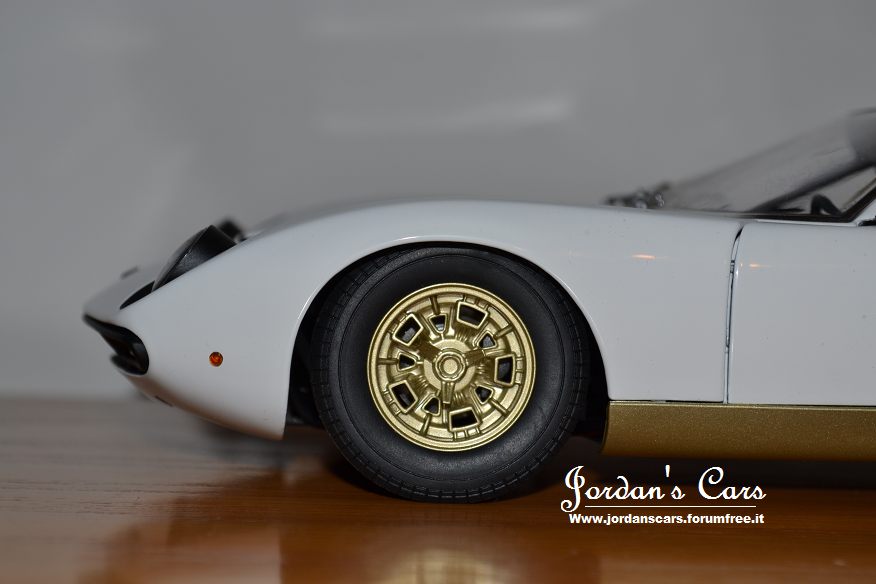
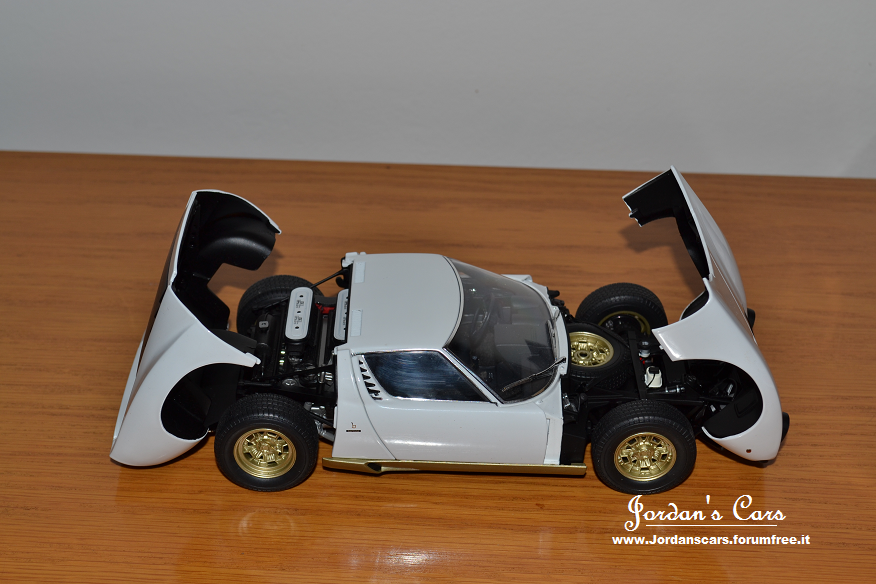
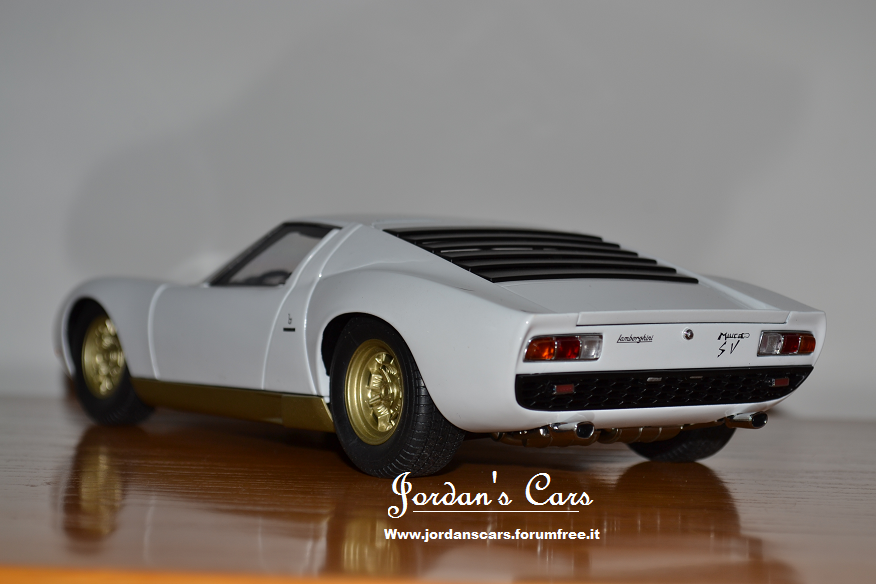
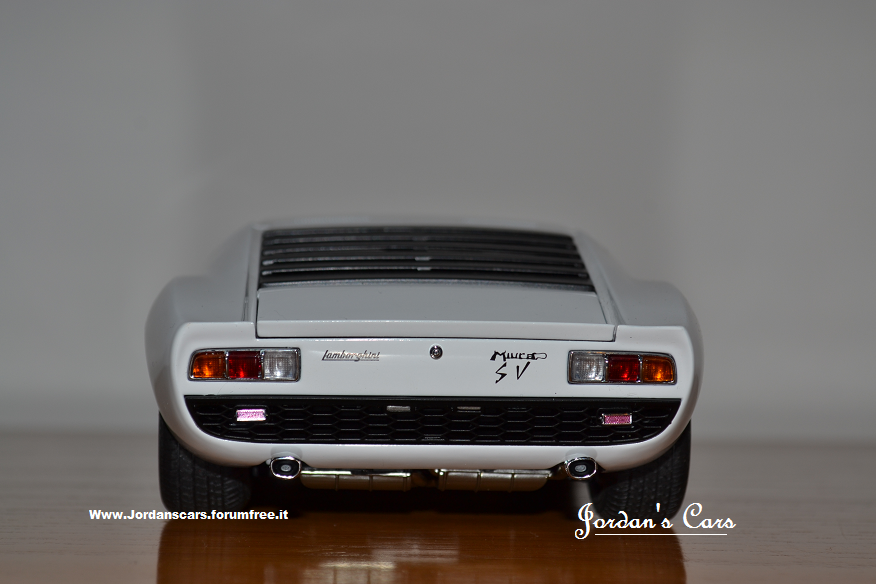
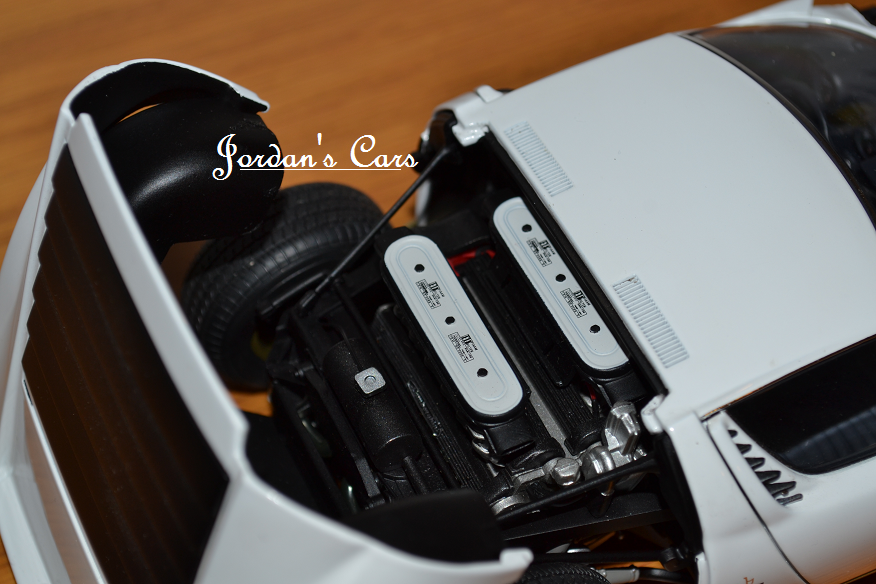
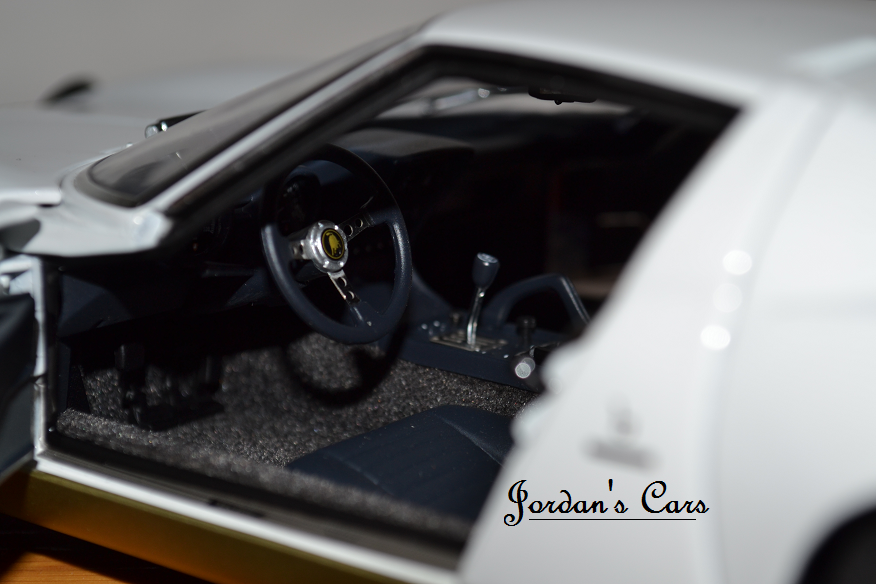
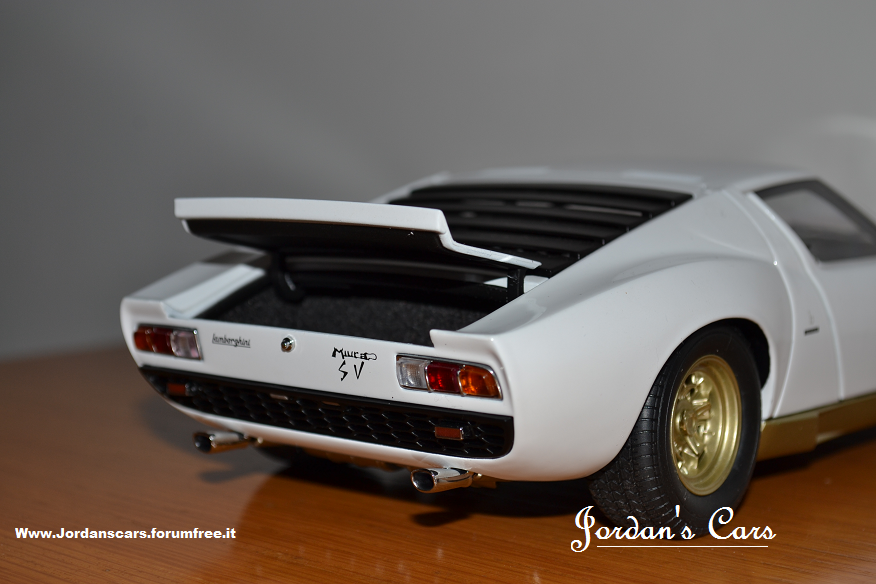
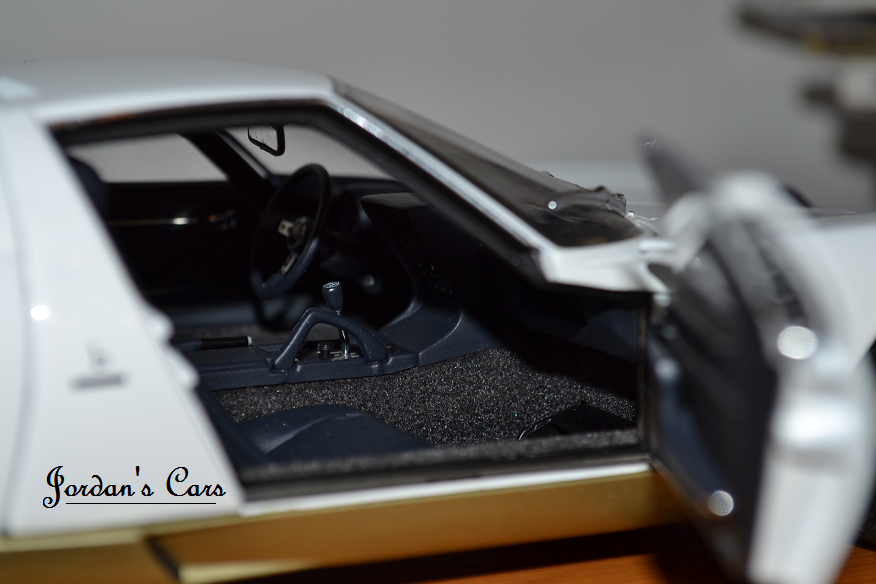
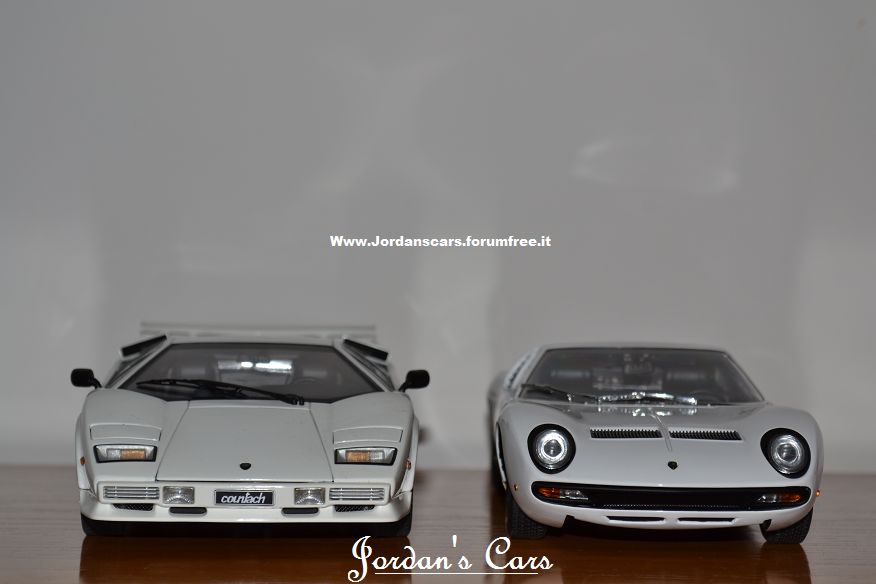
Storia dell'auto - Hystory of the car
La Miura è una vettura sportiva prodotta dalla Lamborghini tra il 1966 e il 1973.
Al salone di Torino del 1965 La Lamborghini espose un autotelaio in lamiera scatolata denominato TP400 (dalla posizione del motore e dalla sua cilindrata). Vi erano stati installati, con poche modifiche, il motore e le sospensioni che già equipaggiavano la 400 GT. Il progetto era un'iniziativa dei tecnici Gian Paolo Dallara e Paolo Stanzani, i quali, pur consapevoli dell'avversione di Lamborghini per le corse, avevano utilizzato lo schema a motore centrale di alcune automobili da competizione dell'epoca, quali la Ford GT40 o la Ferrari 250 LM. Su queste due vetture il motore era però in posizione longitudinale, mentre quello Lamborghini era montato trasversalmente tra l'abitacolo e l'assale posteriore, soluzione che permise di ridurne considerevolmente l'ingombro. In quel periodo la maggior parte delle Gran Turismo sportive adottavano la configurazione motore anteriore e trazione posteriore. Nuccio Bertone, presente alla rassegna, ne fu affascinato al punto di dichiarare a Lamborghini: “Io sono quello che può fare la scarpa al tuo piede”. Quest’ultimo, anche a fronte del notevole entusiasmo suscitato nella potenziale clientela, si lasciò convincere ad approvare il progetto nonostante il suo scetticismo: “Sarà una buona pubblicità”, dichiarò ai suoi tecnici, “ma non ne venderemo più di 50”. La scelta di Bertone come carrozziere fu determinata anche dal fatto che l’azienda di Grugliasco non aveva rapporti di collaborazione con Ferrari e Maserati, i principali concorrenti di Lamborghini, ma soprattutto dal fallimento alla fine del 1966 della carrozzeria Touring, che aveva disegnato le precedenti 350 e 400 GT. La nuova auto fu disegnata in soli 4 mesi dal giovane stilista Marcello Gandini, da poco divenuto capo disegnatore di Bertone per sostituire Giorgetto Giugiaro che se ne era andato alla Ghia. Ferruccio Lamborghini, che era nato sotto il segno del toro, volle battezzare la vettura ultimata col nome Miura in onore dell'allevatore di tori da combattimento Don Eduardo Miura Fernandez. La Miura fu la prima di una lunga tradizione di auto costruite da Lamborghini e battezzate con nomi ispirati alla tauromachia. Inoltre la sigla del telaio perse la T nonostante la meccanica non avesse subito significative modifiche. Presentata al Salone dell'automobile di Ginevra del 1966, La Miura P400 fu un successo senza precedenti. La vettura lasciò senza fiato tutti i visitatori facendo invecchiare di colpo tutte le supercar dell'epoca e dando l'inizio ad una nuova era nel settore delle automobili sportive.
La Miura manifestò alcuni problemi rilevanti dovuti all'innovatività del progetto: la forma aerodinamica del frontale generava portanza all’aumentare della velocità e a seguito dello svuotamento del serbatoio (con conseguente alleggerimento), cosa che la rendeva instabile e poco maneggevole. Per ovviare al problema (che però non fu mai del tutto risolto, fu migliorata l’evacuazione dell’aria dal radiatore (per diminuire la pressione sotto la vettura) ed in alcuni casi fu applicato uno spoiler.
La versione definitiva della Miura, la SV (acronimo di SuperVeloce) arrivò nel Marzo del 1971. La potenza aumentò ancora fino a 385 hp (287 kW). La parte posteriore della carrozzeria fu allargata per consentire l’installazione di pneumatici più larghi e i fari anteriori persero le caratteristiche ciglia[11]. La produzione della SV fu di 150 esemplari. L’ultima Miura costruita, una SV bianca consegnata a Luigi Innocenti(figlio dell'inventore della Lambretta), lasciò la catena di montaggio il 15 gennaio 1973. In totale ne vennero prodotte 764. Fu sostituita dalla Countach solo nel 1974.
Malgrado l'azienda fosse stata fondata da appena tre anni, la nascita della Miura accreditò la Lamborghini come principale concorrente italiana della allora già affermatissima Ferrari. Per i suoi contenuti, tecnici e stilistici in egual misura, la Miura è considerata una pietra miliare dell'evoluzione delle auto sportive europee. A pochi mesi dalla presentazione, nel maggio 1966, la Miura fu scelta come “Pace Car” all’annuale Gran Premio di Monaco di Formula 1. Nel 2004 la rivista americana Sport Cars International, stilando la classifica Top Sports Cars di tutti i tempi, ha posizionato tre volte la Miura al quarto posto nelle differenti classifiche assoluta, anni ’60 e anni ’70. Nel 2013 una Miura SV ha trionfato nella sua categoria al Pebble Beach Concours d'Elegance. La Miura, ieri come oggi, è sempre stata molto ambita dai VIP di tutte le epoche.
A fronte del prezzo richiesto al lancio (7,7 milioni di lire, circa 76.000 Euro al valore del 2012), nel 2014 le quotazioni di mercato variano dai 300.000 Euro richiesti per la P400 fino a 500.000 necessari per una SV. Tuttavia, presso le aste internazionali quattro diverse SV fra il 2010 e il 2013 sono state aggiudicate a prezzi compresi fra 800.000 e 1.300.000 Euro.
___________________________________________________________________________
The Lamborghini Miura is a sports car that was produced by Italian automaker Lamborghini between 1966 and 1973. The car is widely considered to have instigated the trend of high performance, two-seater, mid-engined sports cars. When released, it was the fastest production road car available.
The Miura was originally conceived by Lamborghini's engineering team, who designed the car in their spare time against the wishes of company founder Ferruccio Lamborghini. He preferred powerful yet sedate grand touring cars, rather than the racecar-derived machines produced by local rival Ferrari.
The Miura's rolling chassis was presented at the 1965 Turin auto show, and the prototype P400 debuted at the 1966 Geneva show, to stellar receptions from showgoers and motoring press alike. Both were impressed by Marcello Gandini's sleek styling and the car's revolutionary mid-engine design.
As Lamborghini's flagship car, the Miura received periodic updates and remained in production until 1973, and was not replaced in the automaker's lineup until the Countach entered production in 1974, amid tumultuous financial times for the company.
During 1965, Lamborghini's three top engineers, Gian Paolo Dallara, Paolo Stanzani, and Bob Wallace put their own time into developing a prototype car known as the P400. The engineers envisioned a road car with racing pedigree – one which could win on the track and be driven on the road by enthusiasts. The three men worked on its design at night, hoping to convince Lamborghini such a vehicle would neither be too expensive nor distract from the company's focus. When finally brought aboard, Lamborghini gave his engineers a free hand in the belief the P400 was a potentially valuable marketing tool, if nothing more.
The car featured a transversely-mounted mid-engine layout, a departure from previous Lamborghini cars. The V12 was also unusual in that it was effectively merged with the transmission and differential, reflecting a lack of space in the tightly-wrapped design. The rolling chassis was displayed at the Turin Salon in 1965. Impressed showgoers placed orders for the car despite the lack of a body to go over the chassis.
Bertone was placed in charge of styling the prototype, which was finished just days before its debut at the 1966 Geneva motor show. Curiously, none of the engineers had found time to check if the engine fit inside its compartment. Committed to showing the car, they decided to fill the engine bay with ballast and keep the hood locked throughout the show, as they had three years earlier for the début of the 350GTV. Sales head Sgarzi was forced to turn away members of the motoring press who wanted to see the P400's power plant. Despite this setback, the car was the highlight of the show, immediately boosting stylist Marcello Gandini's reputation.
The favourable reaction at Geneva meant the P400 was to go into production by the following year. The name "Miura", a famous type of fighting bull,[5] was chosen, and featured in the company's newly created badge. The car gained the worldwide attention of automotive enthusiasts when it was chosen for the opening sequence of the original 1969 version of The Italian Job. In press interviews of the time company founder Ferruccio Lamborghini was reticent about his precise birth date, but stressed that he was born under the star sign Taurus the bull.
The last and most famous Miura, the P400SV or Miura SV featured different cam timing and altered carburetors. These gave the engine an additional 15 PS (11 kW; 15 hp), to 385 PS (283 kW; 380 hp). The last 96 SV engines had a split sump. The gearbox now had its lubrication system separate from the engine, which allowed the use of the appropriate types of oil for the gearbox and the engine. This also alleviated concerns that metal shavings from the gearbox could travel into the engine with disastrous and expensive results and made the application of an optional LSD far easier.
The SV can be distinguished from its predecessors from its lack of "eyelashes" around the headlamps, wider rear fenders to accommodate the new 9-inch-wide (230 mm) rear wheels and Pirelli Cinturato tires, and different taillights. 150 SVs were produced.
There was a misprint in the SV owners manual indicating bigger intake valves in English size (but correct size in metric). The intake and exhaust valves in all 4 liter V12 Lamborghini remained the same throughout all models. This intake size misprint carried forward into Espada 400GT and Countach LP 400/LP 400S owners manuals as well.
Related cars / Modelli correlati:
LAMBORGHINI MIURA JOTA SVR ---> https://jordanscars.forumfree.it/?t=69887237
Edited by xJORDANx - 23/5/2017, 21:57
|
|


















